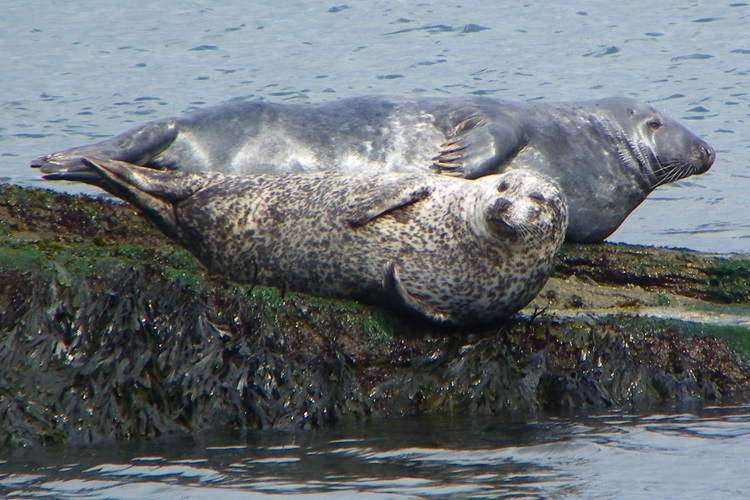St Andrews plays major role in worldwide effort to conserve marine mammal habitats

An international initiative to address major concerns about the conservation of marine mammals has identified more than 30 new Important Marine Mammal Areas (IMMAs) in the Northeast Atlantic Ocean, including 12 in waters around the UK.
The Sea Mammal Research Unit (SMRU) at the University of St Andrews has enabled the identification of the new UK IMMAs by contributing expertise and scientific data on UK marine mammals collected over many decades.
IMMAs are defined as discrete portions of habitat which are important to marine mammal species, and which have the potential to be delineated and managed for conservation. They are identified via independent, peer-reviewed assessments of important habitats based on criteria supported by data.
The new IMMAs in the UK include important habitats for several marine mammal species, including bottlenose dolphins, minke whales, harbour porpoise, and killer whales. Several important habitats for UK seals were also identified, including The Monach Isles in the Hebrides (for grey seals), and The Wash in Lincolnshire and Norfolk (for harbour seals).
Dr Debbie Russell, Principal Research Fellow at SMRU, said: “SMRU aerial surveys show that The Wash in South East England, which hosts the vast majority of the English harbour seal population, has exhibited declines in harbour seal abundance of around 25% in five years. The IMMA boundaries encompass the key offshore habitat used by this population, as revealed by SMRU seal tracking data.”
The waters in St Andrews Bay adjacent to the University are included in the new Moray Firth to Humber Estuary IMMA which, based on long-term photo-identification data gathered by SMRU and partners at the University of Aberdeen, was identified as important habitat for resident bottlenose dolphins.
Other new coastal IMMAs include the waters around Shetland and Fair Isle, the Minches and Sea of Hebrides, and the Orkney Isles, while offshore areas identified as important for a wide range of dolphins and whales include the Rockall Trough Seamounts and Banks IMMA in deep waters far west of Scotland.
Sea Mammal Research Unit Senior Research Fellow Dr Gill Braulik, Deputy Chair of the IMMA initiative, explains that “to date 280 IMMAs have been defined in approximately 75% of the world ocean. IMMAs have comprised 13% of the examined area; 57% lying within exclusive economic zones (EEZs) and 43% in international waters on the high seas”.
Dr Carol Sparling, Director of the Sea Mammal Research Unit, said: “SMRU is very proud to have played a role in this very important work. SMRU experts’ long-term involvement in the collection of data sets on the distribution and abundance of seals and cetaceans around the UK and in European waters was critical to be able to identify these areas of utmost importance. We look forward to seeing how these newly identified areas are used in conservation and marine spatial planning in the future.”
The co-chairs of the IUCN Marine Mammal Protected Areas Task Force, Erich Hoyt and Dr Giuseppe Notarbartolo di Sciara, who lead the effort, are calling on governments to take action to utilise the IMMA tool in marine spatial planning, the creation of marine protected areas or other management initiatives, and for performing environmental impact assessments.
“We are turning the corner in terms of government, industry and academic recognition of the value of IMMAs,” says Task Force co-chair Notarbartolo di Sciara. “As we get closer to completing the global picture, IMMAs are securing a place for whales and other marine mammals at the negotiating table for conservation measures. It is urgent that we take notice.”
Issued by the University of St Andrews Communications Office.